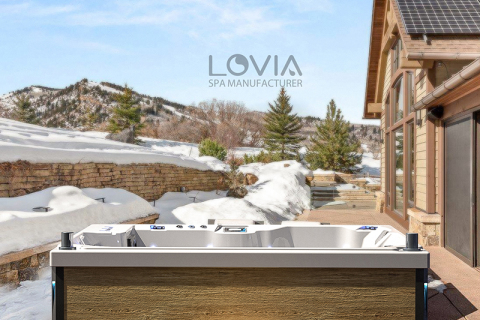
- Home
- >
News
Freestanding outdoor hot tubs are designed to account for heat loss in the outdoor environment. They typically utilize multiple layers of insulation, advanced heating systems, and tightly sealed tub covers to ensure a stable water temperature.
In general, the medium-sized free standing hot tub (60 to 67 inches long, 30 to 32 inches wide, and 24 to 30 inches high) is currently the most popular size choice. It can balance functionality and aesthetics, suitable for single use or to meet the needs of two people sharing. At the same time, this size bathtub is highly adaptable and can be integrated into a variety of bathroom layouts and design styles.
Large freestanding hot tubs Large freestanding spa bathtubs are suitable for families with spacious bathrooms who want the ultimate in comfort and relaxation. Large freestanding spa bathtubs are typically 70 to 75 inches long, 32 to 40 inches wide, and 28 to 36 inches high.
Portable bathtubs are designed to be easy to disassemble and transport, while freestanding ones are movable but focus more on stability and long-term use. Freestanding bathtubs are suitable for fixed outdoor areas, while portable ones are more suitable for short-term or temporary needs. It can be seen that freestanding hot tubs are not completely equivalent to portable hot tubs.
For example, an adult over 1.75 meters tall may need a soaking depth of 45 cm or more to ensure that the shoulders are covered by water. For people under 1.60 meters tall, a soaking depth of about 40 centimeters is comfortable enough.
Generally, designers recommend leaving at least 50-60 cm of space between the bathtub and the wall to ensure that users can easily enter and exit the bathtub without restrictions. Such a distance not only facilitates the use of users, but also avoids the risk of bumps or slips caused by narrow space.
The size, shape, installation location, and safety distance of the bathtub will affect the final required area. Generally speaking, the standard size of a freestanding hot tub is about 5 feet to 7 feet, but the actual size will vary greatly depending on the style and design.
Most free-standing hot tubs do not need to be fixed directly to the floor when installed. This is because the design and materials of free-standing tubs are usually stable enough, especially when filled with water, and the weight is greatly increased, so it is not easy to slide or tilt.
A freestanding hot tub is a free-standing bathtub that is independent of the wall or floor, has a complete enclosure around it, and can be installed alone in the bathroom. Unlike traditional bathtubs, freestanding hot tubs do not require additional framing built into them, thus saving time and cost.
Reinforced decking is often required when installing a hot tub, especially for freestanding hot tubs or large tubs. Reinforced decking ensures that the tub is firmly supported on the ground, preventing the deck from deforming or cracking due to weight or the pressure of use.
Many free standing hot tubs are equipped with locking devices that effectively prevent unauthorized use. This feature can be accomplished through a password, fingerprint recognition or other electronic means, ensuring that only those with legal authority can activate and use the hot tub.











